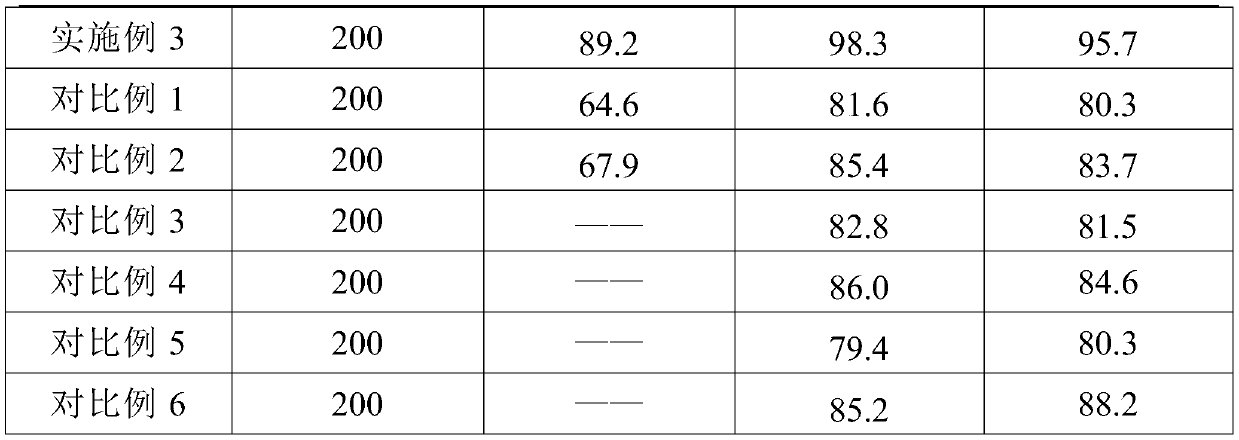Epinephelus fuscoguttatus and epinephelus tukula hybrid artificial reproduction method
A brown-spotted grouper and artificial reproduction technology, applied in the field of grouper reproduction, can solve the problems of low fertilization rate and hatching rate, and achieve the effects of improving hatching rate, fertilizing rate, hatching rate and high spawning quantity.
- Summary
- Abstract
- Description
- Claims
- Application Information
AI Technical Summary
Problems solved by technology
Method used
Image
Examples
Embodiment 1
[0047] A method for artificial propagation of brown-spotted grouper and blue-bodied large grouper hybrid, comprising the following steps:
[0048] (1) Parent selection:
[0049] A, female parent: select healthy brown-spotted grouper more than 5 years old as female parent;
[0050] B, male parent: select the healthy blue-bodied grouper of more than 7 years old as male parent;
[0051] (2) Intensification of parental breeding of brown-spotted grouper:
[0052] a. Cultivation environment: choose an open-air pond with a water depth of 3-4m, a breeding density of about 200 fish / mu, and a male-to-female ratio of 1:0.5;
[0053] b. Feeding feed A and feed B,
[0054] The feed A includes the following components in parts by weight: 2 parts of mackerel, 15 parts of saury, 3 parts of snail meat and 3 parts of snail meat, fed 3 times a day, and the amount of each feed is 1.5 parts of the fish body weight. %;
[0055] The feed B is an artificial feed, comprising the following compone...
Embodiment 2
[0069] A method for artificial propagation of brown-spotted grouper and blue-bodied large grouper hybrid, comprising the following steps:
[0070] (1) Parent selection:
[0071] A, female parent: select healthy brown-spotted grouper more than 5 years old as female parent;
[0072] B, male parent: select the healthy blue-bodied grouper of more than 7 years old as male parent;
[0073] (2) Intensification of parental breeding of brown-spotted grouper:
[0074] a. Cultivation environment: choose an open-air pond with a water depth of 3-4m, a breeding density of about 300 fish / mu, and a male-to-female ratio of 1:0.8;
[0075] b. Feeding feed A and feed B,
[0076] The feed A includes the following components in parts by weight: 6 parts of mackerel, 8 parts of saury, 8 parts of snail meat and 1 part of snail meat, fed 5 times a day, and the amount of each feed is 0.8 parts of the fish body weight. %;
[0077] The feed B is an artificial feed, comprising the following component...
Embodiment 3
[0091] A method for artificial propagation of brown-spotted grouper and blue-bodied large grouper hybrid, comprising the following steps:
[0092] (1) Parent selection:
[0093] A, female parent: select healthy brown-spotted grouper more than 5 years old as female parent;
[0094] B, male parent: select the healthy blue-bodied grouper of more than 7 years old as male parent;
[0095] (2) Intensification of parental breeding of brown-spotted grouper:
[0096] a. Cultivation environment: choose an open-air pond with a water depth of 3-4m, a breeding density of about 250 fish / mu, and a male-to-female ratio of 1:0.7;
[0097] b. Feeding feed A and feed B,
[0098] The feed A includes the following components in parts by weight: 5 parts of mackerel, 11 parts of saury, 5 parts of snail meat and 2 parts of snail meat, fed 5 times a day, and the amount of each feed is 1.3 parts of the fish body weight. %
[0099] The feed B is an artificial feed, which includes the following comp...
PUM
 Login to View More
Login to View More Abstract
Description
Claims
Application Information
 Login to View More
Login to View More - R&D
- Intellectual Property
- Life Sciences
- Materials
- Tech Scout
- Unparalleled Data Quality
- Higher Quality Content
- 60% Fewer Hallucinations
Browse by: Latest US Patents, China's latest patents, Technical Efficacy Thesaurus, Application Domain, Technology Topic, Popular Technical Reports.
© 2025 PatSnap. All rights reserved.Legal|Privacy policy|Modern Slavery Act Transparency Statement|Sitemap|About US| Contact US: help@patsnap.com


